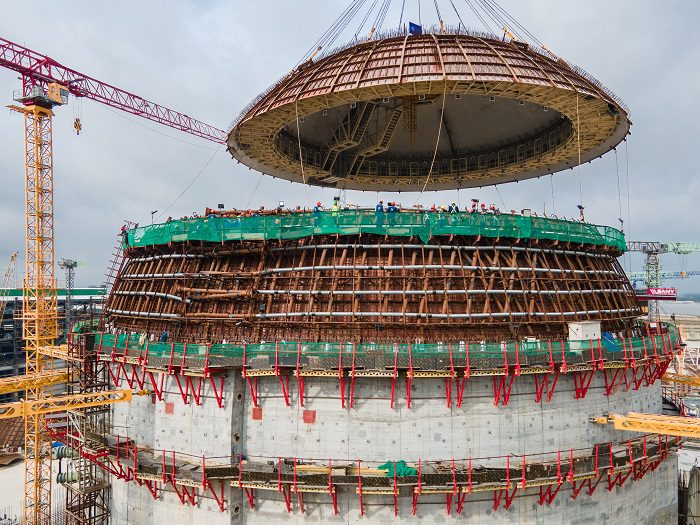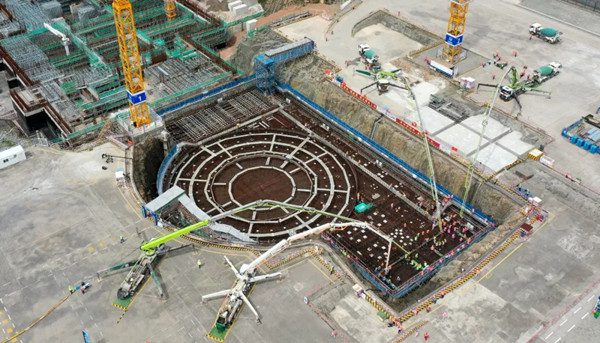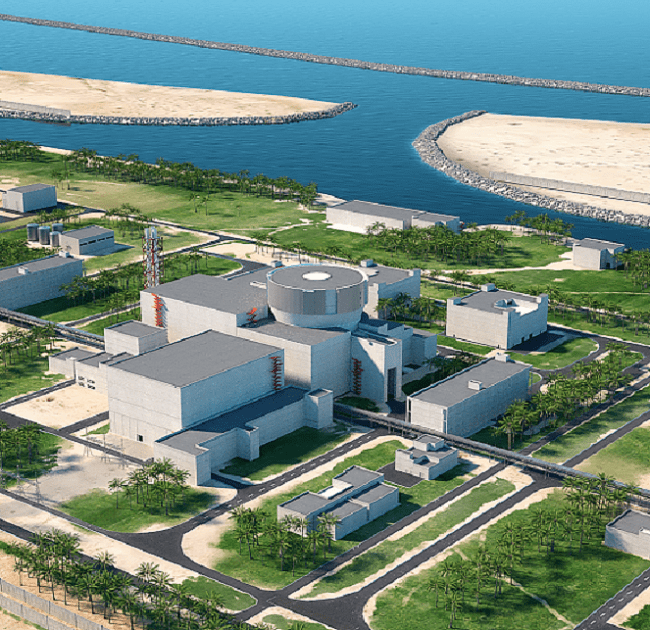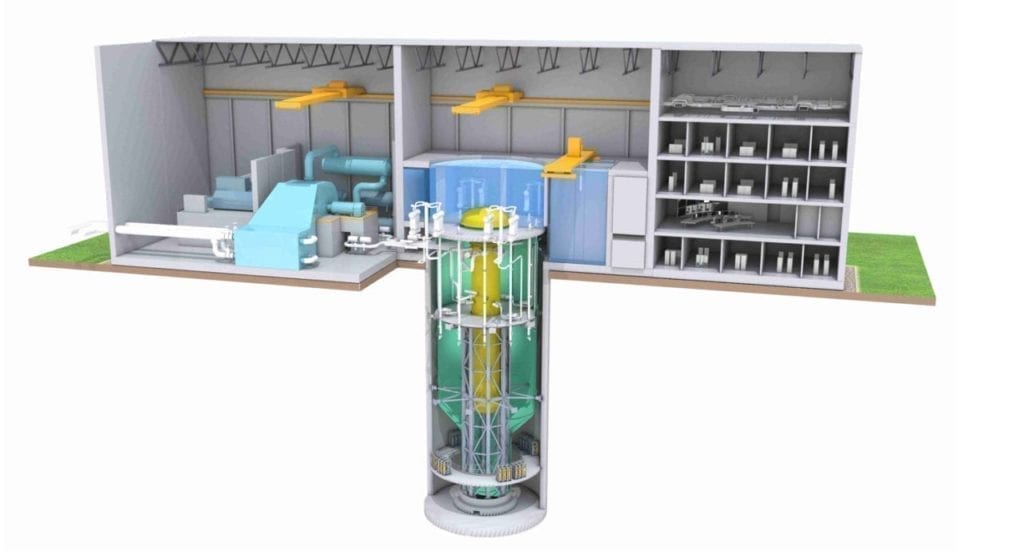Nuclear Power on the Upswing, Numerous Projects Take Shape Around the World
The International Energy Agency (IEA) says momentum is building for nuclear power in many countries amid soaring fuel prices and growing energy security concerns.
“In today’s context of the global energy crisis, skyrocketing fossil fuel prices, energy security challenges and ambitious climate commitments, I believe nuclear power has a unique opportunity to stage a comeback,” IEA Executive Director Fatih Birol said in a statement issued on June 30 in conjunction with the agency’s report titled “Nuclear power and secure energy transitions: From today’s challenges to tomorrow’s clean energy systems.”
“However, a new era for nuclear power is by no means guaranteed,” Birol said. “It will depend on governments putting in place robust policies to ensure safe and sustainable operation of nuclear plants for years to come—and to mobilise the necessary investments including in new technologies. And the nuclear industry must quickly address the issues of cost overruns and project delays that have bedevilled the construction of new plants in advanced economies.”
The IEA predicts nuclear power will double between 2020 and 2050. Still, the agency doesn’t expect it to account for more than about 8% of the global power mix by mid-century.
There is increasing support and interest in advanced nuclear technology—including in small modular reactors (SMRs)—in many countries around the world. However, Birol noted that “advanced economies” have lost market leadership in the nuclear industry. He said 27 of 31 reactors that started construction since 2017 are Russian or Chinese designs. Some of these projects have reached important milestones in recent days.
Rooppur Nuclear Power Plant Inner Containment Dome Installed
ROSATOM reported on June 28 that the inner containment (IC) dome metal structures were installed in the reactor building of Unit 2 at the Rooppur Nuclear Power Plant (NPP) construction site in Bangladesh. Installation activities for the IC dome were conducted in two stages. Last week, the lower portion of the dome weighing 195 metric tons with a diameter of 42.8 meters (m) was placed in its design position. This week the upper portion of the dome (Figure 1) weighing 194 metric tons with a diameter of 35.7 m was placed in its design position at an elevation of 51.7 m. The construction height has now reached 60.5 m.

“IC dome installation is one of the 2022 milestones. We performed similar works at Power Unit 1 last year. Thanks to that, this time the dome preassembling activities lasted 56 days less taking all in all 151 days. Once both IC portions have been welded together, the dome concreting will go ahead,” Alexey Deriy, vice president of ASE JSC and director of the Rooppur NPP construction project, said in a statement.
The Rooppur NPP’s general designer and general contractor is ROSATOM’s Engineering Division. Assembly and installation activities for the IC dome were carried out by specialists with TrestRosSEM LLC (a subdivision of ROSATOM’s Engineering Division). A Liebherr LR11350 crane with a lifting capacity of 1,350 metric tons was used to make the lift, which took four hours. There was reportedly some difficulty in the process because both portions of the dome were required to be placed in the design position with a tolerance of no more than 1 centimeter.
Sanmen NPP Starts Construction on Second Phase Project
China National Nuclear Corp. (CNNC) reported that the first concrete was poured for Unit 3 of the Sanmen NPP on June 28 in East China’s Zhejiang province, marking the start of the plant’s second phase (Figure 2). CNNC has built and put into operation 11 nuclear power units at the Qinshan and Sanmen plants. The first two units at the Sanmen plant were connected to the grid and put into commercial operation in 2018. They have since generated more than 60 TWh of electricity, according to CNNC.

After the two units of Sanmen’s second phase are fully operational, the plant will have a total installed capacity of 5 GW, and will be able to generate about 40 TWh annually. “This will help optimize the industrial structure and energy mix in Zhejiang and is of great significance for the province’s shift to green and low-carbon energy as well as its high-quality economic and social development,” CNNC said.
Kazakhstan Signs Agreement with KHNP to Explore Nuclear Power Development
Kazakhstan Nuclear Power Plants LLP and the nuclear technology supplier Korea Hydro & Nuclear Power (KHNP) signed a memorandum of understanding in the field of nuclear energy development on June 28. The memorandum—signed in Seoul during a visit by the Kazakh delegation led by Deputy Energy Minister Zhandos Nurmaganbetov—will “help strengthen the strategic partnership between Kazakhstan and South Korea in the field of nuclear energy development,” the Energy Ministry’s press office said.
Kazakh government officials have previously said they were actively studying nuclear technologies provided by six global manufacturers: NuScale Power, U.S., NuScale reactor; GE-Hitachi, U.S.-Japan, BWRX-300 reactor; KHNP, South Korea, APR-1000 and APR-1400 reactors; CNNC, China, HPR-1000 and CNP-600+ reactors; ROSATOM, Russia, VVER-1200 and VVER-1000 reactors; and Electricite de France, ATMEA1 reactor. According to the latest reports, however, only four designs are still being considered—Chinese, French, Korean, and Russian.
A future nuclear power plant is likely to be built near Lake Balkhash in the southern part of Kazakhstan. According to one report, the NPP project is not universally popular among the public, but authorities believe “it is the right thing to do.” The Kazakh Energy Ministry expects construction to take up to 10 years, with the estimated cost of one power unit reaching $5 billion.
Vattenfall Begins Feasibility Study for Ringhals SMR
Vattenfall said on June 28 that it will initiate a feasibility study looking at the conditions for building at least two small modular reactors (SMRs) adjacent to the Ringhals nuclear power plant.
“We will need all fossil-free energy sources to meet the increasing demand for electricity in Sweden. SMR is a fossil-free technology that has come a long way in recent times, so we want to investigate the conditions for building small modular reactors in the vicinity of Ringhals nuclear power plant,” Vattenfall CEO Anna Borg said in a statement.
While no investment decisions have been made, Vattenfall’s management team has been actively investigating new nuclear power options for several months. “Provided that a feasibility study concludes that it would be profitable and all other conditions for a future investment decision are met, in particular, new regulations for nuclear power, it should be possible to have the first SMR reactor in operation by the early 2030s,” Borg said.
The Ringhals site is a suitable location for new nuclear power units for several reasons. “On the one hand, we are allowed to replace the two shutdown reactors Ringhals 1 and Ringhals 2 within the existing legislation, and on the other hand, there is already grid infrastructure in place that makes connecting new electricity generation simpler. There’s also a lot of acceptance for both existing and new nuclear power at Ringhals and Forsmark. One major advantage is also the comprehensive skill level available at Ringhals,” said Torbjörn Wahlborg, head of Business Area Generation at Vattenfall.
Work on the feasibility study will start immediately and is expected to be completed by the end of 2023 or early 2024.
Construction Permit Issued for El-Dabaa NPP Unit 1
On June 29, the Egyptian Nuclear and Radiological Regulatory Authority issued a permit for the construction of Unit 1 of the El-Dabaa NPP. The permit, together with excavation work at site, is a prerequisite for the start of the main stage of construction.
The El-Dabaa NPP will be the first nuclear power plant in Egypt. It will be built in the city of El Dabaa on the Mediterranean coast, about 300 kilometers northwest of Cairo. The NPP will consist of four power units, 1,200 MW each, with VVER-1200 reactors, a generation III+ design. ROSATOM claims this is the newest generation technology that is already operating successfully. Four power units with reactors of this generation operate in Russia—two each at the Novovoronezh and Leningrad NPP sites. A VVER-1200 reactor also operates outside of Russia at the Belarus NPP. It was connected to the grid in November 2020.
The El-Dabaa NPP (Figure 3) is being constructed in accordance with a package of contracts that entered into force in December 2017. In accordance with the contractual obligations, the Russian party will not only construct the power plant, but will also supply nuclear fuel for the whole lifecycle of the NPP and will aid the Egyptian partners in training of personnel, support of operation, and service during the first 10 years of its operation. Under a separate agreement, the Russian party will build a special storage facility and will supply containers for storing spent nuclear fuel.

“Obtaining construction permit for the Unit 1 is a momentous occasion paving the way for the launch of full-scale construction of the first NPP in Egypt,” Alexey Likhachev, ROSATOM director general, said in a statement. “Rosatom will build a reliable state-of-the-art NPP with reactors based on the Russian VVER-1200 design of the innovative Generation III+. It meets the world’s highest safety standards, and successfully operates in Russia. El-Dabaa NPP will be the first nuclear power plant of this generation on the African continent. It will further secure the country’s regional technological leadership.”
GE Hitachi SMR Technology Selected for Deployment in Saskatchewan
GE Hitachi Nuclear Energy (GEH) announced on June 27 that its BWRX-300 SMR (Figure 4) has been selected by SaskPower for potential deployment in the mid-2030s.

“We are excited that SaskPower has chosen the BWRX-300 for the generation of carbon-free electricity,” Jay Wileman, president and CEO of GEH, said in a statement. “The BWRX-300 is the ideal SMR technology solution for SaskPower and customers that want to make an impact on climate change and energy security in a meaningful timeframe. There is the potential for great synergy between the work we plan to do with SaskPower and the ongoing work with Ontario Power Generation (OPG).”
In December 2021, GEH was chosen by OPG as its technology partner for the Darlington New Nuclear Project. OPG is expected to submit a construction license application this year—a major step toward the deployment of the first BWRX-300. GEH is targeting completion of a BWRX-300 at the Darlington site as early as 2028.
If SaskPower ultimately moves forward with deployment of BWRX-300 technology, it is expected to benefit from the lessons learned through the OPG project. “This is an important milestone as Saskatchewan works towards a cleaner, more sustainable future,” said Don Morgan, minister responsible for SaskPower. “Conducting an independent and comprehensive evaluation while also collaborating with the other provinces on the SMR Strategic Direction has been extremely valuable in reaching this important milestone to potentially bring nuclear power to Saskatchewan.”
GEH claims there is significant and growing global interest in the BWRX-300. In addition to Canada, GEH has memoranda of understanding or other agreements in place to explore deployment of the technology with companies in the U.S., Poland, Sweden, Estonia, and the Czech Republic, among others.
—Aaron Larson is POWER’s executive editor (@AaronL_Power, @POWERmagazine).